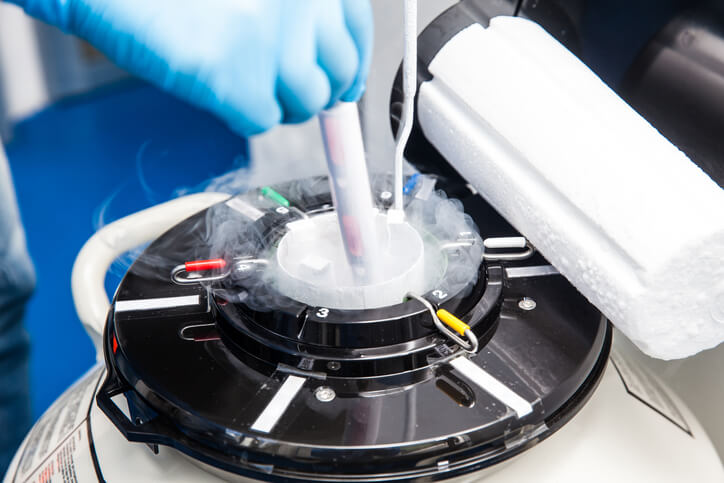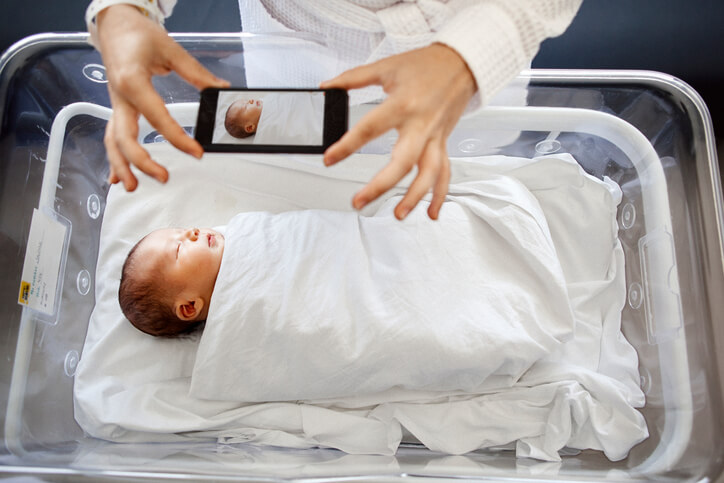If you have a loved one who is struggling with infertility, it can be difficult to know what to say when talking about this emotional issue. While you know that not expressing these emotions can be devastating for intended parents, it can seem equally difficult to bring up these topics and emotions without seeming pushy or nosy.
Determining what to say to someone struggling with infertility can be difficult, but knowing what not to say to someone struggling with infertility is easier. To help you in this regard, we’ve gathered some of the most insensitive (purposefully or not) comments and questions that our intended parents have been asked — so you know exactly what not to say to someone coping with infertility.
1. “Are you pregnant yet?”
Trust us — intended parents have asked themselves this question countless times during their infertility struggles. For them, pregnancy is a delicate topic to discuss, and having someone ask them this question only reminds them that they are not yet pregnant. If they were pregnant, you can guarantee they would share their good news as soon as they felt it was possible.
Instead of asking this question, focus on asking them about other aspects of their life. When they are ready to announce their pregnancy (or their decision to pursue another family-building process), they will let you know.
2. “If you stop stressing and thinking about it, it will happen.”
For those for whom pregnancy was easy, it can be tempting to just say “it will just happen.” Unfortunately, for many intended parents dealing with infertility, pregnancy will not naturally occur. In fact, the topic of pregnancy likely consumes most of their thoughts. Telling them to “forget about it” and “relax” is counterproductive and can cause more harm than good.
3. “You should try (insert home remedy here).”
Intended parents struggling with infertility are usually already working with doctors to address their fertility needs. They don’t need a loved one offering up home remedy and medical advice, as well. What may have worked for you in your own journey to conceive likely won’t work for intended parents, especially if it is an unscientific, unproven suggestion. Intended parents are doing everything they can to become pregnant and, as well-meaning as your advice is, it should be kept to yourself.
4. “Really? It was so easy for me to get pregnant!”
While this is great for you, mentioning this fact to those struggling with infertility is just another reminder of the more difficult path they are on to becoming parents. You may think that knowledge of how many people successfully become pregnant would raise their spirits, but it’s actually incredibly hard for intended parents to hear. It won’t be easy for them to get pregnant, and hearing how easy it was for you won’t help them feel better.
5. “Why don’t you just adopt instead?”
Adoption is not as easy as those who are unfamiliar with the process think it will be — and it’s not right for everyone struggling with infertility. It’s easy to quickly suggest alternative family-building processes if you have never struggled with infertility, as you won’t understand how difficult it will be for intended parents to grieve dreams of a genetically related child. Wherever someone is at in their infertility journey, it is not your place to suggest what steps they should take next — just their doctor’s.
6. “You don’t know how lucky you are! Kids are so expensive and a handful to deal with.”
Intended parents would give everything to have a child, and belittling the joys of parenthood will do nothing to help them feel better about their situation. It’s common to try to deflect difficult emotions with jokes, but what may seem like no big deal to you is another reminder to intended parents of what they are missing.
7. “I know exactly how you are feeling.”
Unless you have struggled with the same infertility issues to the same degree as the intended parents you’re speaking to, you do not understand what they are feeling. Taking a couple of months to conceive naturally is nowhere near the same as struggling through a year of infertility treatments with no success. Always offer your support and empathy but do not pretend that you are in the same situation that those intended parents are in right now.
8. “You have one/two children. Isn’t that enough?”
Everyone has the right to have as large or as small a family as they want. Just because parents are dealing with infertility issues does not mean that they lose that right. As always, be empathetic, not judgmental, when it comes to someone struggling with infertility. While it’s normal to try to point out the blessings parents already have, remember that people often have a desired family makeup, and asking why the children they have aren’t “enough” can put intended parents in a difficult emotional spot.
9. “You can have my children if you want!”
Again, while you may intend this as a well-meaning joke, it’s not appreciated by intended parents. Joking about the importance of your children will not make them feel better but remind them that other people in the world are lucky enough to have as many children as they want naturally.
10. “Maybe it’s a sign that you’re not meant to be a parent.”
Everyone has the right to be a parent, no matter their fertility situation. When intended parents hear this phrase, it’s an embodiment of their deepest fear — that they may never have the child they’ve dreamed of for so long. Even if intended parents can’t conceive naturally, there are many family-building options available to them to bring a child into their lives — and you should always support them in whatever path they choose, rather than make them question their dreams and desires.
—
If your loved one is struggling with infertility and you don’t know what to say, make sure to support them and be empathetic above all else. If you are unsure of how to provide the empathy your loved one needs, consider reaching out to a local infertility support group and inviting your loved one to join you.
You can also find community through our Instagram.
The surrogacy specialists at American Surrogacy are always available to provide counseling for intended parents struggling with infertility, whether it’s emotional or a discussion of their options. To learn more today, please call 1-800-875-2229(BABY).










